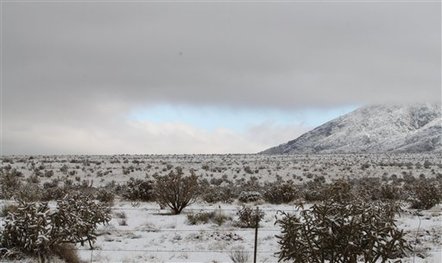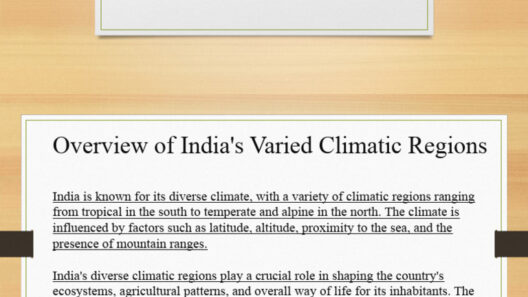The climate of grasslands, particularly the prairies, is as variable as a painter’s palette splashed with contrasting colors. These expansive landscapes are characterized by their unique meteorological phenomena, which is primarily dictated by their geographical location and topographical features. The prairies encompass a realm where the whispers of the wind and the rustle of grasses coalesce into a tapestry of seasonal extremes, each uniquely manifesting the heart of a dynamic ecosystem.
A myriad of factors influences the climate of grasslands. The location of the prairies in the interior of continents results in a continental climate, marked by hot summers and cold winters. The vast expanses of the prairies lie removed from the tempering effects of oceans, which leads to significant temperature fluctuations. The scorching sunlight in the summer can transform the landscape into a golden sea of grasses, while winter drapes it in a somber cloak of ice and snow. Understanding these climatic features is vital for appreciating the delicate balance that sustains prairie ecosystems.
One of the most captivating aspects of prairie climate is the role of wind. The flat topography allows for unobstructed airflow, which means that prairie winds can sweep across the landscape with an ease that belies their power. These winds not only shape the physical environment, but they also participate in the climate’s intricate dance. Their ceaseless movement transports heat and moisture, creating microclimates within the broader prairie setting. During summer, the winds can offer a welcome relief from the sweltering heat, while in winter, they howl like restless spirits, further exacerbating the chilling temperatures.
As seasons transition, so too does the climate, showcasing a dazzling display of extremes. Spring breathes life into the prairies, as temperatures begin to rise and rainfall becomes more plentiful. The rejuvenation period is often marred by capricious weather patterns, leading to thunderstorms that can erupt without warning. These tumultuous celestial events can be both a blessing and a curse. Thunderstorms foster growth by providing essential moisture, yet they can also unleash torrents of rain, creating the risk of flooding. This paradox embodies the very essence of life in the prairies—a delicate balance of necessity and jeopardy.
As summer takes hold, with its sweltering heat and abundant sunshine, the prairies flourish. Temperatures can soar above 100 degrees Fahrenheit, creating shimmering mirages on the horizon. During this season, grasslands become a verdant stage for diversity, hosting a plethora of flora and fauna. However, this vibrant epoch also brings with it the threat of drought. As precipitation becomes sporadic, grasses adapt, their deep roots reaching for moisture hidden within the soil, akin to treasure hunters seeking their prize. To sustain themselves and their ecosystems, the plants must demonstrate resilience, a testament to the enduring spirit of life in these vast expanses.
Autumn descends upon the prairies like a slow, thoughtful sigh. The once-vibrant foliage gradually withers, yielding to softer hues of amber and rust. This transformation symbolizes the cyclical nature of life and death, inherent in the prairie ecosystem. As temperatures start to decline, the landscape prepares for the impending cold. Strong winds sweep across the prairies, heralding the arrival of winter. The interplay between autumn and winter is characterized by an exhilarating ballet of colors, temperatures, and weather patterns, reminding us of nature’s temporal beauty.
When winter finally arrives, it blankets the prairies in a profound stillness. Frost crystallizes upon the grasses, offering a breathtaking view reminiscent of a diamond-studded landscape. The temperatures can plunge drastically, often reaching subzero conditions. Yet, this seemingly inhospitable environment is not devoid of life. Animals have adapted significantly to endure the harsh conditions, exemplifying the remarkable resilience of nature. They rely on the cover provided by the remaining grass to shield themselves from biting winds, teaching valuable lessons of survival and adaptability.
Understanding the complex climate of prairies is crucial for conserving these vital ecosystems. The influences of climate change—shifting temperature patterns, heightened extremes—pose threats to the delicate balance that defines grasslands. Understanding this intricate web of climatic factors highlights the urgency to safeguard these unique landscapes. As advocates of environmental stewardship, it is our responsibility to acknowledge the beauty and fragility of the prairies, much like a melody that is both haunting and enchanting.
In conclusion, the climate of the grasslands represents an intricate interplay of elements, each contributing to the splendor and robustness of the ecosystem. From the spirited prairie winds that carry tales of ancient lands to the seasonal extremes that sculpt the very fabric of life, every facet of this environment underscores the importance of preservation. The stark beauty of the prairies—the highs and lows of temperature and precipitation—reminds us of the delicate balance that sustains all life. As stewards of the Earth, recognizing the complexities of these ecosystems is vital for fostering a sustainable future.







